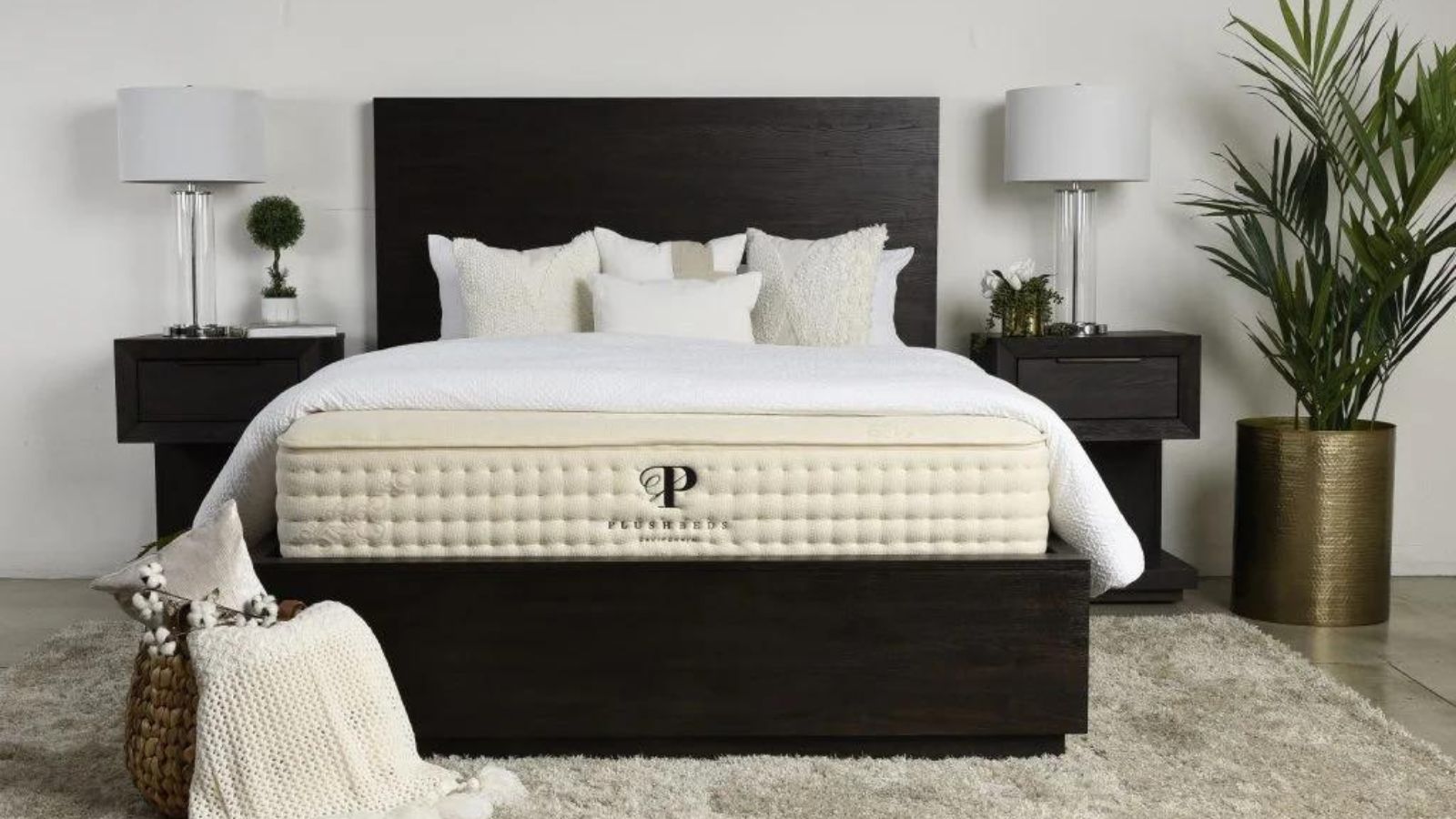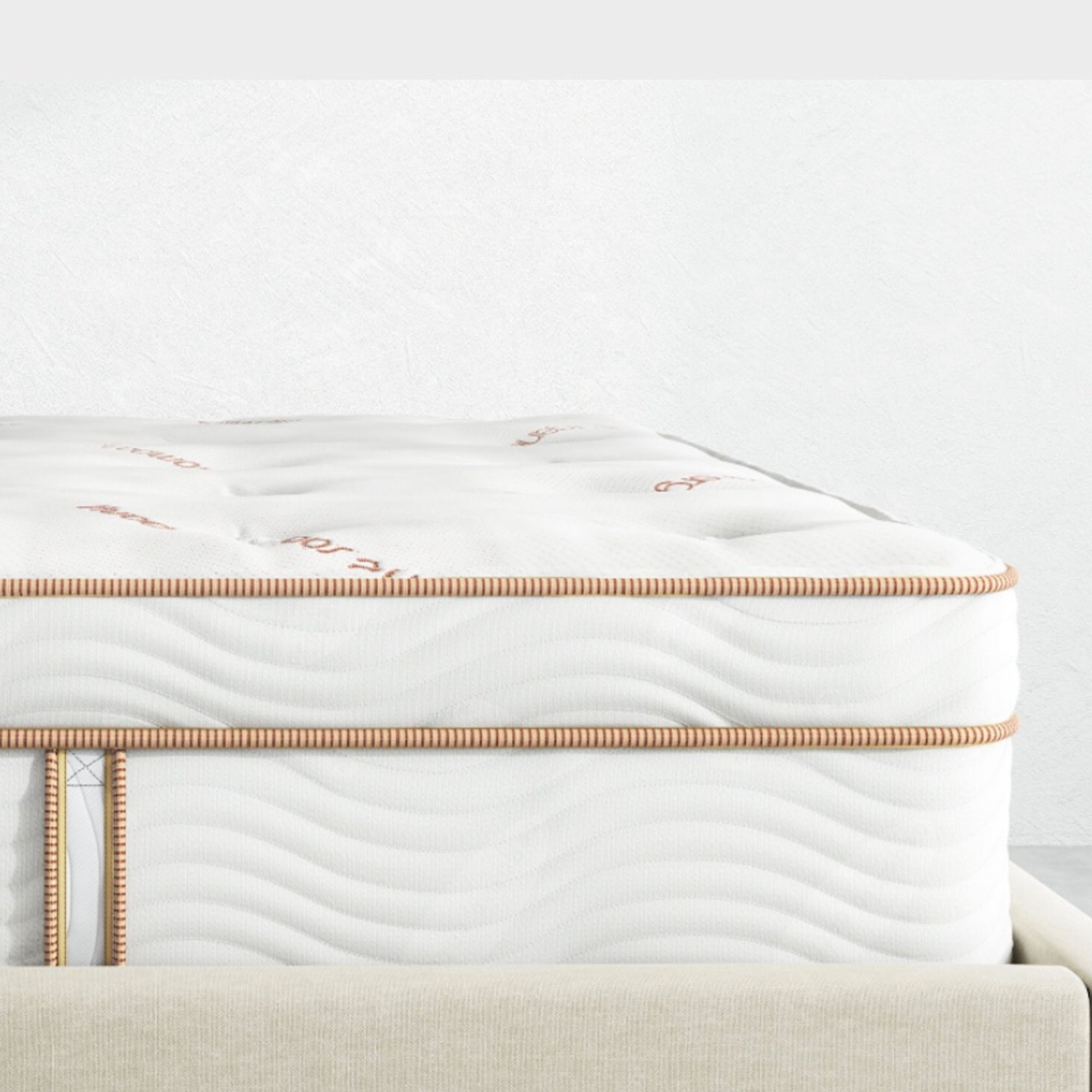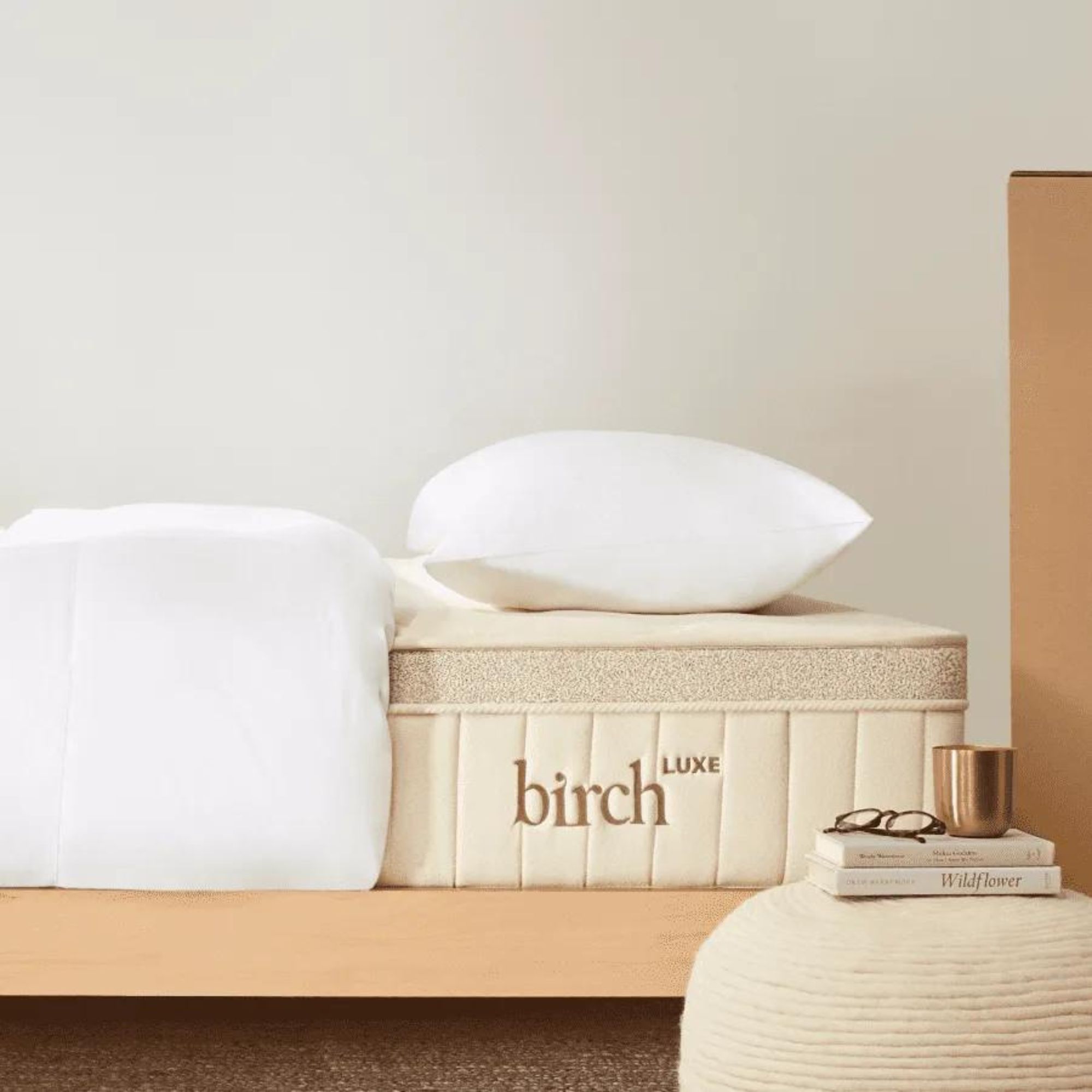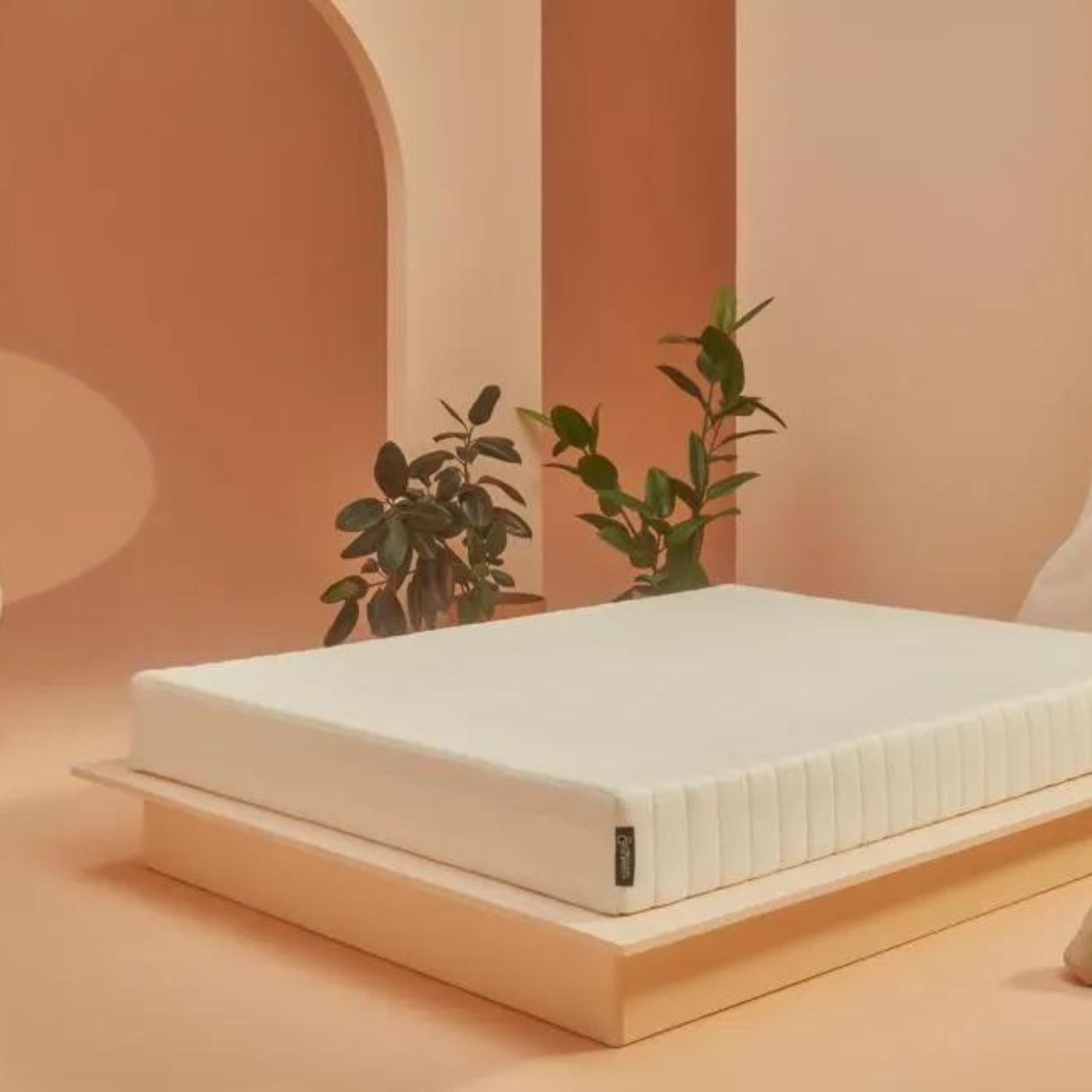
I'll need to buy a new bed within the next year or two and I'm seriously considering a latex mattress. Latex is the best way to get the contouring support of memory foam, without the heat retention or unpleasant off-gassing odor.
Springy and supportive, a latex mattress is perfect for pressure relief. Whether you suffer from chronic pain or the odd ache or you just want to maintain the natural alignment of your spine, a latex mattress is the best place to do it.
Out of all the mattress types, a latex mattress is best for eco-conscious shoppers. These natural fibers are far more breathable and durable than anything you'll find in a stuffy synthetic mattress. Still, even the best latex mattress isn't perfect and most are seriously expensive, unless you can bag a bargain in the mattress sales.
What is a latex mattress?
This article should tell you everything you need to know about latex, from how it's made to what it costs. I asked mattress testers and medical professionals to help me outline the pros and cons of a latex mattress, so that you can decide whether it's the best mattress for you. To save you the trouble of searching, I've picked out a few of my favorite latex beds, each of which is tried and tested by an H&G sleep expert.
What is a latex mattress?

Before we begin, it always helps to define our terms. Natural latex is made from the sap of rubber trees, which is frothed into foam and baked into mattress molds. Your average latex mattress is filled with multiple layers of latex, while a latex hybrid mattress is lined with supportive steel coils, then topped with a comfort layer of latex foam.
There are two methods of making latex. Dunlop latex is formed when you bake the rubber sap in a vulcanization oven: out comes thick, firm foam, which makes a great support core. To make Talalay latex, you pour rubber sap into a mold and use a vacuum to suck out all the oxygen, which is replaced with carbon dioxide. Talalay latex feels soft and foamy: this is the sort of latex you'd find in a comfort layer. Many latex beds incorporate layers of Dunlop and Talalay latex to balance comfort and support through the mattress.
That's how you make natural latex, anyway. There is such a thing as synthetic latex, which is derived from petroleum products. Synthetic latex isn't as springy or supportive as natural latex, and it's far less likely to meet textile emission standards. If you're shopping for a latex mattress, it's always best to buy organic.

This is the best organic mattress on the market. Filled with Dunlop latex for durability and topped with Talalay latex for a bit of plush comfort, the PlushBeds Botanical Bliss Organic Latex Mattress feels soft, yet supportive. Our expert tester, Alex, found it really helped to reduce her back and hip pain.
You can find more detail in our PlushBeds Botanical Bliss Organic Latex Mattress review.

This latex mattress is made to support all sleep positions. Our expert tester, Alex, sleeps on her stomach, while her husband tends to lie on his back. They both appreciated the medium-firm feel of this mattress, which helped to ease their backache and realign their spines.
You can find more detail in our Saatva Latex Hybrid Mattress review.

The Birch Luxe Natural Mattress is the best luxury mattress for anyone who doesn't want to compromise their comfort for their conscience. This bed is topped with layers of quilted cashmere and organic wool to boost breathability, while the plush pillowtop lends a lovely sinking feeling.
You can find more detail in our Birch Luxe Natural Mattress review.
What are the pros of a latex mattress?

As H&G's resident sleep writer, I'm often asked: is it good to sleep on latex? Almost invariably, my answer is 'yes'. Like all natural fibers, latex is highly breathable, suitable for hot sleepers and summer nights. Some of the best cooling mattresses are made from latex.
Latex beds are also the most durable, built to last for up to 20 years if you take good care of them. That's almost four times as long as the life of your average memory foam mattress. When you invest in a latex mattress, you're saving yourself from spending on something stuffy and synthetic, which will only end up in landfill in a few years.
When I asked fellow mattress tester Derek Hales what he likes best about latex beds, he said it's all about the bounce. 'Latex has the benefit of being an incredibly responsive surface, which provides faster response times and higher bounce than other mattress types', says Derek. All that elasticity increases the weight bearing capacity of the mattress and reduces pressure on your body, offering more comfort and support.
I've combed through our back catalog of reviews to bring you a few more of our favorite latex beds. Whether you're a hot sleeper, or you're buying on a budget, I know exactly which mattress you should buy to get your best night's sleep.

Our expert tester, Jill, slept on the Saatva Zenhaven Natural Latex Mattress through two heatwaves, but she never once woke up sweating. She attributes that to the natural thermoregulation of latex, which works to dissipate heat and wick moisture while you sleep.
You can find more detail in our Saatva Zenhaven Natural Latex Mattress.

This latex mattress is lined with more than 1,000 spring coils, carefully arranged into ergonomic zones to target each area of your body with the support it needs. The rest of the bed is filled with organic latex, wool and cotton, though there's also a vegan option which is made without wool.
You can find more detail in our Avocado Green Mattress review.

The vast majority of latex mattresses are very expensive: we're talking several thousand dollars for a Queen. If you're buying on a budget, but you're still keen to shop sustainably, then I suggest you invest in the Earthfoam Organic Mattress. It's never listed for more than $999 for a Queen, and you still get plenty of plush comfort.
You can find more detail in our Earthfoam Organic Mattress review.
What are the cons of a latex mattress?

It's no secret that latex beds can be seriously expensive. That's the price you have to pay for organic materials and sustainable manufacturing. Retailing at $999 for a Queen, the Earthfoam Organic Mattress is the best option for buyers on a budget. I wouldn't spend much less on latex and still expect to get a quality product.
When I spoke to licensed chiropractor Dr. Brent Wells, he shared that 'some people may find latex mattresses too firm at first. While firmness is beneficial for spinal support, it may take time for certain sleepers to adapt. In the meantime, they might experience temporary discomfort or insufficient comfort'. In my experience, it takes a good few weeks to break in a mattress, and I'd encourage you to keep trying with your latex bed for at least a month before you try to send it back.
'Additionally, latex mattresses are heavier and can be difficult to move or rotate,' says Brent. 'This may pose a challenge for individuals with limited mobility or chronic pain conditions who need to adjust their sleeping arrangements.' Still, you could always ask a friend or family member for help. In all likelihood, you won't need to move your mattress more than a couple of times a year.
Final thoughts
You might have made it to the end of this article and realized that a latex mattress just isn't for you. Don't worry – you've still got plenty of options. A memory foam mattress would offer far superior motion isolation, while a hybrid mattress would combine the responsive nature of latex with the contouring comfort of foam.







